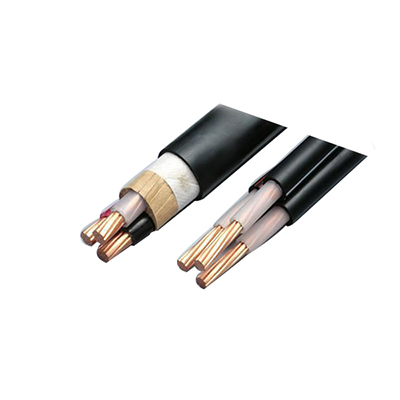Armoured power cables YJV22 VV22
Description
Transmission and distribution systems for power cables, AC rated voltage 0.6/1KV PVC insulated power cables and 35KV and below XLPE power cables, their performance not only meets the standard GB1276 and IEC60502 and IEC60840, but also has formed a series of flame-retardant, fire-resistant, cold resistant and waterproof power cables.
Details of YJV22 VV22 power cable price for armored power cables:
Transmission and distribution systems for power cables, AC rated voltage 0.6/1KV PVC insulated power cables and 35KV and below XLPE power cables, their performance not only meets the standard GB1276 and IEC60502 and IEC60840, but also has formed a series of flame-retardant, fire-resistant, cold resistant and waterproof power cables.
Matters needing attention in installation of power cables
When the cables are installed parallel to the heat pipes, the distance between 2m should be maintained, and 0.5m should be maintained when crossing.
When the cable is parallel or cross installed with other pipelines, 0.5m distance should be maintained.
The buried depth of 1-35KV cable is not less than 0.7m when the cable is buried directly.
When 10KV and below cables are installed in parallel, the distance between each other is not less than 0.1M, 10-35KV is not less than 0.25m, and the distance between cross installation is not less than 0.5m.
The laying temperature of the cable is not less than 0 degrees, the bending radius is more than 15 (D+d), the single core cable is more than 20 (D+d), (D is the outer diameter of the cable, D is the outer diameter of the conductor).
6KV and above cable connector:
(1) when installing the cable terminal, the semiconductor shielding layer must be stripped. The insulation should not be damaged during operation. The scratch should be avoided. If necessary, sandpaper will be used to smooth the shield. The shielding ends should be smoothed and the graphite layer (carbon particles) should be removed.
2. The copper strip shield and steel armour of plastic insulated cable terminal must be grounded properly, and the principle of short circuit is also followed. It avoids the induced electromotive force at the end of the steel armor, and even the "fire" and the combustion jacket. The grounding lead wire requires me to use tin plated braided copper wire and ferrochrome tin soldering when connecting with the cable copper belt. It is not suitable to use the torch to seal the weld so as to avoid burning the insulation.
3. The three phase copper shield should be connected to the ground wire respectively. Attention should be given to shielding grounding wire and steel armored ground wire to separate each other and to insulate each other. The location of welding ground wire should be as low as possible.
The basic requirements for cable ends and intermediate joints are as follows: A. conductor connection; B. insulation is reliable; radiation crosslinking heat shrinkable silicone rubber insulation material is recommended; C. is well sealed; D. has enough mechanical strength to adapt to various operating conditions.
The ends of cables must be protected from erosion by water and other corrosive materials, so as to prevent breakdown due to the ageing of insulation caused by water trees.
Cable handling must be carried out with crane or fork lift truck. It is prohibited to be transported flat or flat. Large cable should be installed with cable car to avoid damage to cable or abrasion due to manual dragging.
If the cable cannot be laid in time for any reason, it should be stored in dry place to prevent the sun from drying up and the water at the end of the cable.


